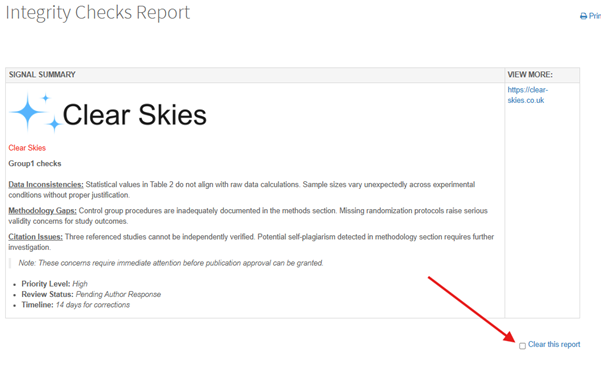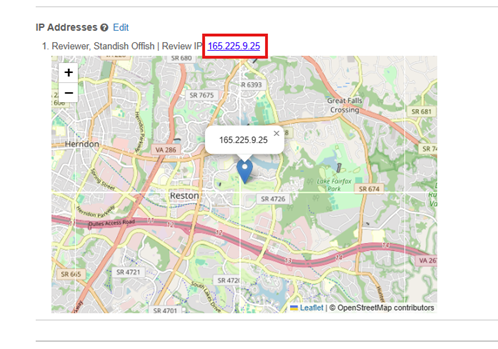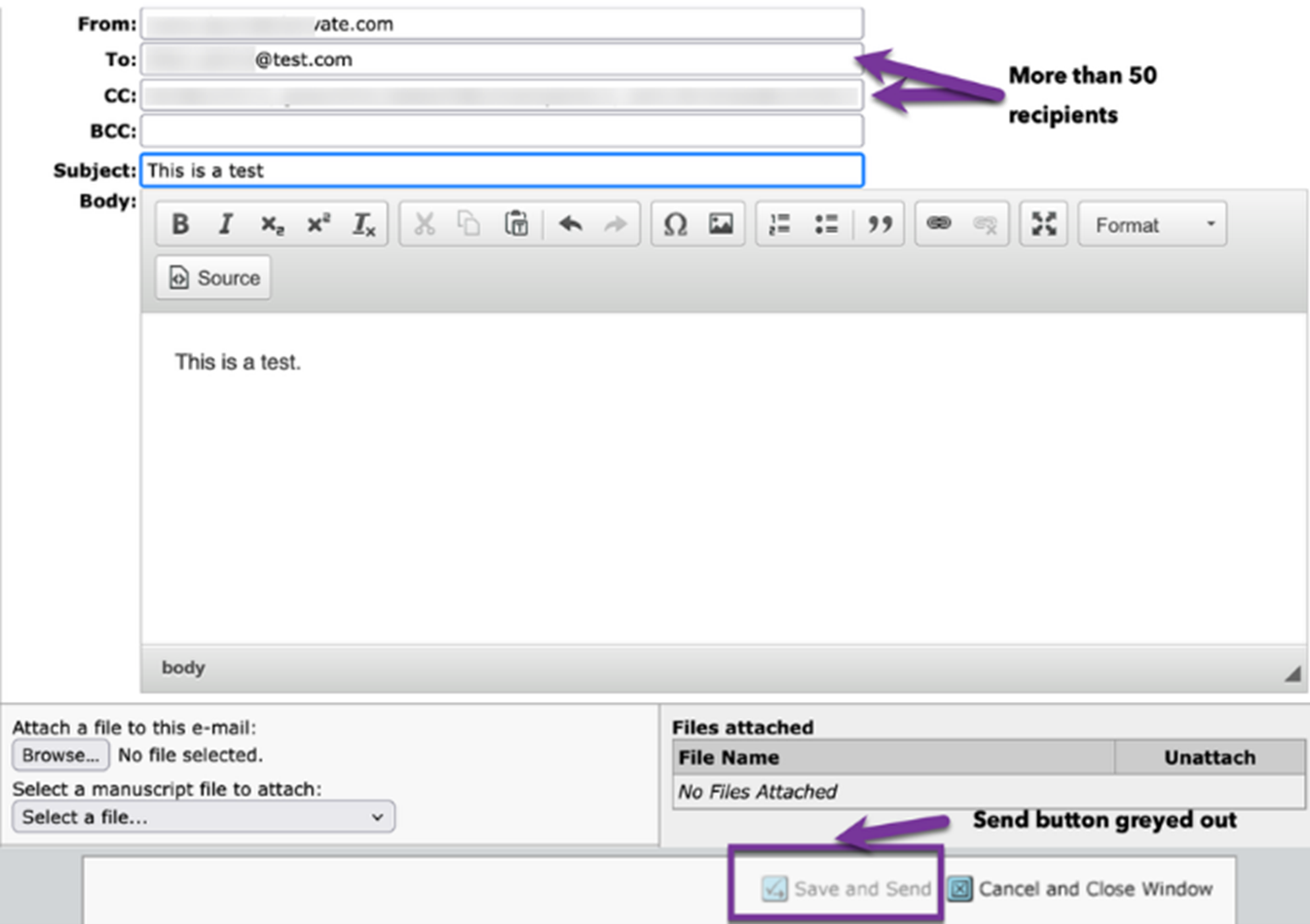Q3.2025 Release
The ScholarOne Product Team is actively engaged in ongoing upgrades to security, performance, and user experience. The following items represent notable improvements made to the platform and tools in this release, as well as key defect fixes and optimizations. This release will be live on August 26, 2025.
This document also provides information about default configuration values and instructions for configuring each feature. Please note that some features must be activated by an administrator or ScholarOne representative for your users to benefit from the new functionality; contact your publisher team or ScholarOne for questions around permission or configurations.
We encourage you to communicate workflow changes to all affected users.
If you have questions about any of the items included in this release, please reach out to ScholarOne Product Support at s1help@silverchair.com.
Chinese | French | Japanese | Portuguese | Spanish
Following the acquisition of ScholarOne by Silverchair in November 2024, we are committed to continuing the great work of the ScholarOne Product Team. You can read a high level view of our 2025 product vision here, and our modernization strategy here.
ScholarOne Manuscripts Q3.2025 – August 26
- Research Integrity Reports via ScholarOne Relay
- New features for the Unusual Activity Detection report
- Platform Upgrade to Java 17
- Added new email tag: ##CONTINUE_SUBMISSION_LINK##
- Restricted email sending for 50+ recipients in pop-up emails
- Read-only indicator in getSubmissionInfoFull API (v11)
- Update: Secure File Transfer (SFTP) library upgrade to v8.1.0
- Update: At-A-Glance Statistics
- Coming Soon: ScholarOne Gateway
Research Integrity Reports via ScholarOne Relay
ScholarOne Relay, our new API layer enabling two-way data flow between S1M and third–party vendors, was released in March. Our August release contains several new features in the ScholarOne user interface that aim to support identification and triage of manuscripts that are flagged for potential integrity concerns.
Features include:
- Integrity Checks Report available on manuscript details page. This report is where all third-party data will be displayed from service vendors.

- Integrity Reports queue on admin/editor dashboards. This queue on the dashboard contains all manuscripts that have been flagged with risk indicators (as defined by the service vendor). This queue provides easy access to “risky” manuscripts but does not impact or change the existing workflows for the journal.
(NOTE: the Integrity Reports queue is a separate queue from the Unusual Activity Detection queue, which is represented in the screenshot below as the “Medium and High Risk” queue.)
- ‘Clear this report’ on Integrity Reports. When “clearing” a report, the manuscript is automatically removed from the Integrity Reports queue.

Implementation
The Integrity Checks report will only appear on sites for customers using ScholarOne Relay to leverage any of our third-party Research Integrity partners.
The Integrity Reports queue can be activated via client configuration (step 10, “Dashboards”). For users without client configuration access, please make sure to include a request to activate the “Integrity Reports” queue when arranging for an integration setup.
For customers interested in this functionality, please note that an agreement must be established directly with the service vendor before ScholarOne can activate the integration. Please reach out to your account manager or ScholarOne support for more information on how to arrange an integration setup.
New features for the Unusual Activity Detection report
As part of ScholarOne’s continued focus on improving tooling for identifying and investigating manuscripts with potential integrity concerns, we’ve added some new features to the Unusual Activity Detection report to improve ease-of-use.
Features include:
- Maps now available on UAD report for IP addresses. When investigating UAD flags related to IP address, users can now click on a linked IP address and generate a map that shows the geolocation of the IP address, eliminating the need to research the IP outside of ScholarOne to identify the location. NOTE: geolocation maps will only be available for reports generated following the release.

- New configuration for UAD banner colors. Users may now configure the UAD banner background colors (which were updated in the previous release to change colors when actioned). Users may now configure a site so that a UAD alert banner retains its original color even when actioned by enabling the config option in the screenshot below or reaching out to ScholarOne support. The intent is to ensure that all parties acting on the paper are aware of the issues that the UAD tool flagged, instead of providing a green “all clear” banner for manuscripts that are actioned.

Implementation
Geolocation maps will be available by default for all customers using the Unusual Activity Detection tool. Configuration for the UAD banner colors can be found in the client configuration center (step 17, Manuscript Details); for users without client configuration access, please submit a ticket to ScholarOne support for activation.
Platform Upgrade to Java 17
As part of this release, ScholarOne Manuscripts has been upgraded to Java 17. This update ensures that our platform runs on a more modern, secure, and supported version of Java, providing improved performance, enhanced security, and better long-term stability. There is no action required on your part, but this upgrade helps us continue delivering a reliable and up-to-date experience.
Added new email tag: ##CONTINUE_SUBMISSION_LINK##
Introduced a new email tag ##CONTINUE_SUBMISSION_LINK## that, when resolved, provides a secure and direct link for authors to resume submission of manuscripts marked with the In Draft flag. This tag allows authors to resume submission of draft manuscripts via email link.
The behavior is similar to existing tags for revisions, resubmissions, and appeals.
- ##CONTINUE_SUBMISSION_LINK## tag description:
A unique, secure hyperlink that allows authors to continue the submission process of a single manuscript that is currently in draft. - Works only for manuscripts with the In Draft Flag (includes both unsubmitted and revision/resubmission drafts).
- Functions similarly to existing tags:
- ##CREATE_REVISION_LINK##
- ##CREATE_RESUBMISSION_LINK##
- ##CREATE_APPEAL_LINK##
- Two-step process:
- Author clicks on the link → directed to a confirmation webpage.
- Upon confirmation → taken directly to the submission workflow (auto-logged in).
Implementation
- Tag is placed in email templates such as: “Manuscript Unsubmitted”
- Resolved email contains.
PLEASE NOTE: This is a two-step process. After clicking on the link, you will be directed to a webpage to confirm: https://mc.manuscriptcentral.com/test?URL_MASK=123
- When the user:
- Clicks the link: They see a confirmation page: “Please Confirm Your Response”
- Clicks Confirm: They are automatically logged in and taken to:
- The first page of the submission workflow, or
- The last page visited, with all previously entered data preserved.
- Navigation is restricted to prevent access to other manuscripts.
If the draft no longer exists, the behavior will mirror existing tag logic—an error or notice is displayed, just like when a revision or appeal link is used after the manuscript is no longer in draft.
Restricted email sending for 50+ recipients in pop-up emails
To comply with AWS SES’s hard limit of 50 recipients per message, a new restriction was added to prevent users from sending emails that would be blocked.
The process is as follows:
- The Save and Send button will be disabled (greyed out) when the total number of recipients exceeds 50.
- An error message will appear at the top of the pop-up email (consistent with the behavior for blocked email addresses).
- Users can:
- Remove recipients to bring the total under the limit, which reactivates the Save and Send button.
- Add recipients manually; if the count exceeds 50, the button will become disabled again.
- The check and behavior apply only to manual (pop-up) emails

Note: Automated emails (e.g., scheduled or system-triggered notifications) are not impacted by this limitation.
Read-only indicator in getSubmissionInfoFull API (v11)
Enhance getSubmissionInfoFull API by including a read-only indicator (<readOnly>) for selected fields, but only in the case of invited submissions (stub submissions). This provides clarity on which fields are editable in subsequent versions of invited submissions.
API Version
- Endpoint: /api/s1m/v11/submissions/full/metadata/
- Supported query parameters:
- submissionids or documentids
- site_name, locale_id, _type
Example Call
/api/s1m/v11/submissions/full/metadata/submissionids?site_name=xyz&locale_id=1&ids=’2025-1222.R1′,’2024-111’&_type=xml
Invited (Stub) Submissions
When an invited submission is included in the request:
- The API response includes a <readOnly> indicator with a value true or false for specific metadata fields (listed below), only if the field has data.
- The <readOnly> indicator may appear for the following fields if they contain data:
- type
- title
- runningHead
- manuscriptAbstract
- subCustomQuestionsTypePage
- subCustomQuestionsFilePage
- subCustomQuestionsAtrrPage
- subCustomQuestionsAuthorsPage
- subCustomQuestionsDetailsPage
- subTitle
- attributes
Example:
<manuscriptAbstract>
<readOnly>true</readOnly>
<responseValue>Test abstract</responseValue>
</manuscriptAbstract>
<title>
<readOnly>false</readOnly>
<responseValue>Draft Title</responseValue>
</title>
Update: Secure File Transfer (SFTP) library upgrade to v8.1.0
Upgraded SFTP library from version 7.3.0 to 8.1.0 to enhance the security and reliability of SFTP-based manuscript exports. The upgrade addresses support for modern, secure algorithms. The ssh-rsa algorithm was deprecated primarily by OpenSSH, one of the most widely used implementations of the SSH protocol. Continuing to use ssh-rsa is discouraged by security standards, including those outlined by OpenSSH and NIST.
Implementation
- There is no impact on the existing export functionality—current exports will continue to run as expected.
- However, ScholarOne recommends that clients begin transitioning away from ssh-rsa keys in favor of more secure alternatives—such as rsa-sha2-256, ecdsa-sha2-nistp256, or ed25519—all of which are fully supported in the upgraded SFTP library (v8.1.0).
- While this change does not currently require clients to update their SFTP key configurations, we recommend aligning with these updated security practices as soon as possible to ensure long-term compatibility and compliance with industry standards. When you’re ready to begin using the new SFTP library version, please submit a case to Support Team so we can enable it for your site(s).
Update: At-A-Glance Statistics
We’re excited to share that At-A-Glance statistics are now generated in real time when users access the At-A-Glance link. This change replaces the previous nightly batch process.
What’s changed:
- Before: Some At-A-Glance statistics were calculated once per day via an overnight batch process.
- Now: The Submissions Statistics, Total Pending Manuscripts, Oldest manuscript without a decision, Journal Statistics and Accept Ratio are calculated in real time, delivering up-to-date insights instantly:
Coming Soon: ScholarOne Gateway
ScholarOne Gateway, our new centralized hub that connects authors and reviewers to a publisher’s portfolio through a single, redesigned interface, is currently live in a closed pilot phase with select development partners. Release notes for Gateway are not publicly accessible, but as we look to expand the pilot to additional customers and plan for a full production rollout in 2026, more information will soon be available about the full suite of Gateway’s features and our plans for expansion. To learn more, please visit our website or reach out to your account manager.
